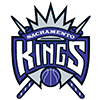The NFL summer season is nearly here with players set to report to camp throughout the week ahead. The early days of camp can be maddening for fantasy owners looking to gauge the overall health of a player who ended the previous season hampered. Let me offer some early season advice for decoding injury information.
1.) Take everything a player says with a grain of salt.
At this point nearly every player is "in the best shape of their life" with an abnormally high percentage of individuals "ahead of schedule in their recovery." However, don't buy into player hype and instead turn to the old adage of actions speak louder than words. A player's availability is the best measure of health. A player steadily upping their workload is a good indicator of improving health. If a player isn't seeing some form of action for a prolonged period of time, he isn't "all ready to go."
2.) Don't fear the random rest day.
Players working their way back from injuries will often be provided precautionary time off to appropriately manage their workloads. This isn't a reason to panic. Some injuries, particularly soft tissue ailments, often require a slow progressive return to play that may require time away from the field. Some players will perform other controlled activities during these off days, while other may not do anything more than watch films. Furthermore, proven veterans not vying for roster spots are more likely to receive the occasional day off. Time off shouldn't negatively impact
The NFL summer season is nearly here with players set to report to camp throughout the week ahead. The early days of camp can be maddening for fantasy owners looking to gauge the overall health of a player who ended the previous season hampered. Let me offer some early season advice for decoding injury information.
1.) Take everything a player says with a grain of salt.
At this point nearly every player is "in the best shape of their life" with an abnormally high percentage of individuals "ahead of schedule in their recovery." However, don't buy into player hype and instead turn to the old adage of actions speak louder than words. A player's availability is the best measure of health. A player steadily upping their workload is a good indicator of improving health. If a player isn't seeing some form of action for a prolonged period of time, he isn't "all ready to go."
2.) Don't fear the random rest day.
Players working their way back from injuries will often be provided precautionary time off to appropriately manage their workloads. This isn't a reason to panic. Some injuries, particularly soft tissue ailments, often require a slow progressive return to play that may require time away from the field. Some players will perform other controlled activities during these off days, while other may not do anything more than watch films. Furthermore, proven veterans not vying for roster spots are more likely to receive the occasional day off. Time off shouldn't negatively impact a player's injury risk as long as a rest day doesn't turn into a week away from the field.
3.) Keep your fingers crossed during the first week of training camp.
A majority of new injuries occur in the first week that players report. Participating in high level football-related activities places strain on areas of the body that's hard to simulate in individual workouts. If a player can make it through the first week of camp without popping up on the injury report I feel much better about their short and long-term health.
Now that you know what to look for, let's take a look at a few players I'll be closely monitoring entering the start of training camp.
The speedy receiver is getting off to a slow start during his rookie season after being selected by the Ravens late in the first round. Brown is still recovering from offseason surgery on his foot, which prevented him from running at the combine. Brown's injury involves the Lisfranc joint of the foot, a joint located in the midfoot where the bones of the arch connect to the long bones of the foot. This positioning makes the joint an integral part of the integrity of the entire foot.
Brown is still unable to run at full speed as the team carefully manages his recovery. A cautious approach is warranted, as any lingering discomfort or instability in the area would likely elicit pain and could potentially lead to further reinjury or injury. Furthermore, hardware failure following surgery is a common complication, so it's important that Brown's foot feels good and is durable enough to bear full weight with increased activities.
Unfortunately, the track record for running backs and wide outs coming back from a Lisfranc injury suggests Brown may need time to return to top form. Players like Maurice Jones-Drew, Ronnie Brown, Darren McFadden and Santonio Holmes all saw a dip in productivity following Lisfranc injuries.
Look for the Ravens to continue treating Brown conservatively, and don't be shocked if he starts the year on the PUP list. The team is heavily invested in his long-term health, and ensuring the well-being of the linchpin of his foot is key in making sure he has a prolonged, successful career. Fantasy owners looking to draft Brown early may want to shore up the rest of their wide receivers before selecting the rookie.
While Brown is looking to start his career, Hopkins is hoping the first significant injury of his All-Pro career will not cut his short. The Texans wide receiver suffered a severe acromioclavicular (AC) sprain in his right shoulder during the team's playoff loss to the Colts. Fortunately, Hopkins' injury did not occur in the spot most people associate with the shoulder.
Most people assume the shoulder is a simple ball and socket joint, when in actuality it's a complex unit made up off multiple joints and articulations. One of these joints is the AC joint, located where the collarbone connects to a bony process on the shoulder blade known as the acromion. The AC joint acts as a strut, allowing the arm to be raised overhead. It is stabilized by two ligaments, the acromioclavicular (AC) and coracoclavicular (CC) ligaments. Both are susceptible to injury when the tip of the acromion is forced downward following a direct blow or collision.
Due to the joint's unique structure, AC sprains have their own grading scale. Hopkins suffered a Grade 3 sprain, meaning both ligaments tore away from the bone. This often results in displacement of the collarbone and damage to the surrounding musculature. Fortunately, Hopkins avoided surgery but will start the season on the PUP list. The Texans will continue to manage his rehab and can activate him at any time. They are optimistic he will be ready and available for Week 1 against the Saints.
The injury doesn't drastically alter my opinion of Hopkins given the 27-year-old's durability and production throughout his career. I suspect there is some slight regression given his age and career workload, but Hopkins should remain a top-tier option.
Michel is rapidly becoming a player I'm avoiding on draft day. There isn't just one reason but a multitude of things all converging at once to create the perfect storm of risk. To start, he has a lengthy injury history dating back to high school when he tore the ACL in his knee. The knee issues have lingered ever since and were considered a major red flag on draft day. He will now start the year on the PUP list as the knee problems persist.
Second, he plays for the Patriots, a team that is difficult to gauge when it comes to injuries. They are particularly tight-lipped regarding specifics and determining a player's health status can be maddening. As a result, knowing the severity of Michel's injuries is nearly impossible.
His team also becomes a factor when you consider how New England historically manages their running backs. Michel is clearly atop the depth chart, but head coach Bill Belichick likes to rotate who gets the most carries, often playing matchups. This year should be no different with Belichick having Michel, James White, Rex Burkhead and Damien Harris all at his disposal.
With all this considered, it's hard to put much confidence in what Michel's 2019 stat line will look like and I'll likely be looking elsewhere.

























